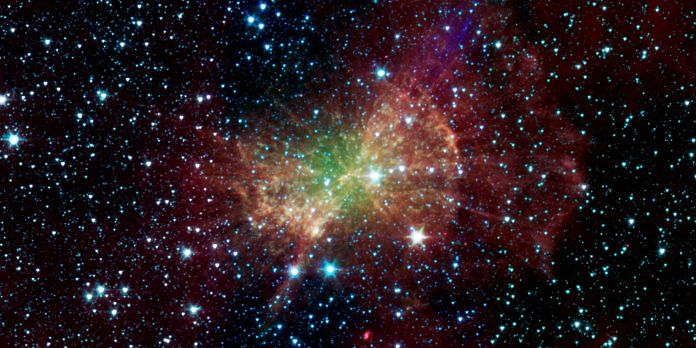Bengaluru: The first molecule that ever formed in the universe, the elusive helium hydride, has finally been detected in space, ending a 94-year search for what is believed to mark “the dawn of chemistry”.
The ion HeH+ was found in a young planetary nebula — the expanding cloud of gas thrown up by ageing stars — in the Milky Way constellation Cygnus the Swan, around 3,000 light years from Earth. The findings have been detailed in a study published in the journal Nature Wednesday.
HeH+ was the first molecular bond to ever exist in the universe, taking shape around 300 millennia after the Big Bang, when an atom of the noble gas helium latched on to a positive hydrogen ion (a proton). It has since been destroyed and replaced with hydrogen molecules and helium atoms.
“Although HeH+ is of limited importance on Earth today, the chemistry of the universe began with this ion,” the team of researchers wrote in the study. “The unambiguous detection reported here brings a decades-long search to a happy ending at last.”
The team is drawn from three German institutions, the Max-Planck Institute for Radio Astronomy, the Institute of Physics at the University of Cologne, Germany, and University of Applied Sciences Bonn-Rhein-Sieg, apart from Johns Hopkins University, US, and Institut de Radioastronomie Millimétrique, France.
The existence of HeH+ was first proved in 1925, when it was synthesised in a laboratory, but limited technology hindered its detection until now. In the 1970s, models predicted that it should be present in abundance in nebulae.
The young planetary nebula NGC 7027 has long been thought of as an ideal candidate for this discovery and kept under observation by NASA’s Hubble space telescope.
It is here that HeH+ has now been discovered.
Also read: A bigger Hadron Collider can wait & the money put in other scientific endeavours
‘Dawn of chemistry’
About 300,000 years after the Big Bang, which is traced to around 13.8 billion years ago, the universe cooled down to below 4000 K (3,725°C).
As a result, all the free ions and charged particles zipping about with high energies were finally able to cool and slow down, as well as bond with one another to form atoms. The two most abundant elements in the universe formed atoms first: Helium ions cooled to form helium atoms (He), followed by hydrogen ions forming hydrogen atoms (H). Lithium atoms formed next.
During this time, in this metal-free and low-density environment, neutral helium atoms formed the universe’s first molecular bond, HeH+, through radiative association with protons.
As more such molecules formed, even more were destroyed, leading to the formation of molecular hydrogen (H2).
HeH+ and other atomic and molecular species composed of hydrogen, helium and lithium evolved with the age of the universe, and thus provide a timeline for its early evolution.
It is estimated these molecules stopped forming after about 100 million years, and were instrumental in the formation of the first stars.
Also read: No one knows who discovered gold, but it is quietly shaping our world
‘A beautiful demonstration’
Observing the molecule in a natural setting was necessary to understand its formation better.
However, it is only visible in infrared, which made its detection incredibly difficult. At these wavelengths, our own planet’s atmosphere comes in the way, creating a haze and obstructing data from outside.
In this study, the researchers were able to bypass this problem by using a telescope mounted on an aircraft called SOFIA (the Stratospheric Observatory for Infrared Astronomy), which is a modified Boeing 747SP widebody equipped with a telescope.
As NASA explains, “Flying into the stratosphere at 38,000-45,000 feet puts SOFIA above 99 per cent of Earth’s infrared-blocking atmosphere, allowing astronomers to study the solar system and beyond in ways that are not possible with ground-based telescopes.”
Over three flights in 2016, the astronomers focussed SOFIA’s telescope on NGC 7027.
The nebula’s star is one of the hottest known in the sky and is estimated to have shed its outer layers only about 600 years ago. The cloud of dust and gas that is the nebula is extremely hot, reaching temperatures of over 100,000°C.
It is thus ionised, and also young and compact, resembling a mini-version of the early universe. It’s because of this factor that the nebula is an ideal location for hunting HeH+ wavelengths.
“The discovery of HeH+ is a dramatic and beautiful demonstration of nature’s tendency to form molecules,” study co-author David Neufeld, a professor at Johns Hopkins University said in a statement.
“Despite the unpromising ingredients that are available, a mixture of hydrogen with the unreactive noble gas helium, and a harsh environment at thousands of degrees Celsius, a fragile molecule forms.”



